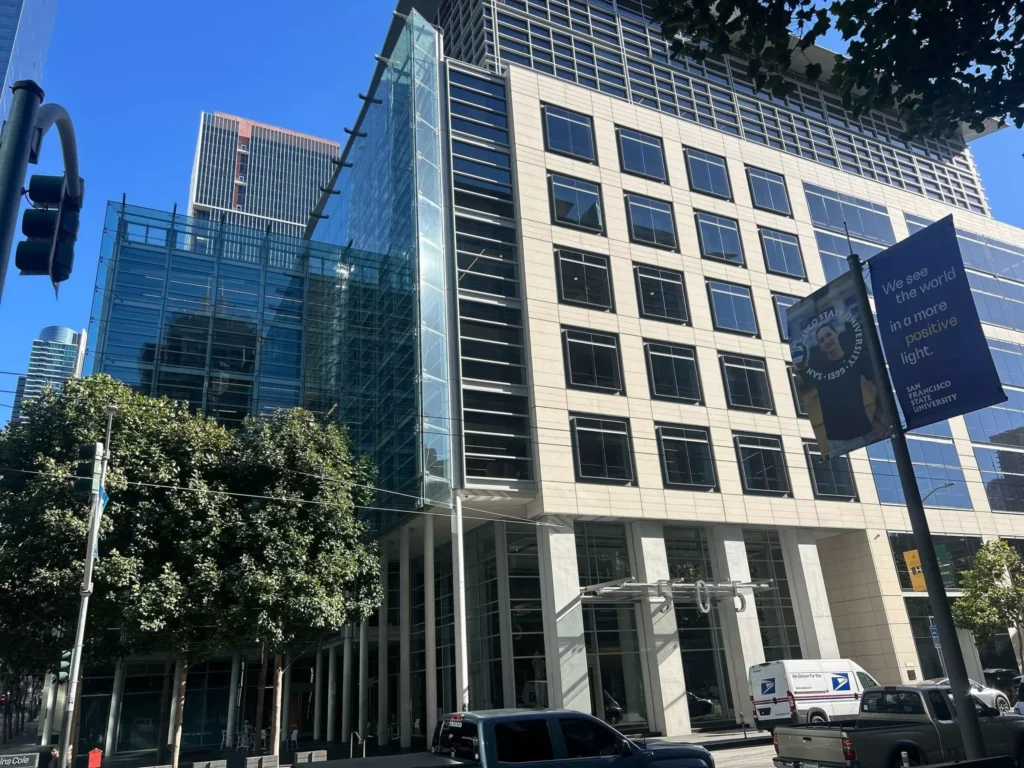In the ever-evolving landscape of artificial intelligence and automation, companies are increasingly vying for dominance in what can only be described as a competitive arms race. Among them, Anthropic, a notable player formed by former OpenAI researchers, has solidified its strategy through strategic relocations and expansions, particularly in the high-demand area of San Francisco’s SoMa district. This move not only reinforces Anthropic’s presence in a tech hub but also illustrates broader market trends affecting AI and automation platforms at large.
Anthropic’s recent decision to lease two additional floors at 505 Howard Street adds to its footprint, already extensive following its sublease of 230,325 square feet from Slack earlier this year. Compounding this is the strategic foresight demonstrated by the company in choosing short-term leases. By ensuring that both leases align to expire simultaneously in 2028, Anthropic positions itself for future scalability, potentially enabling a consolidation of operations and a campus-like environment conducive to innovation. Such planning hints at a broader trend where firms must exhibit not only innovative capabilities in AI and automation tools but also foresight in operational strategy.
The context of this expansion is significant. The SoMa area is increasingly being branded as “AI Alley,” with competing firms like OpenAI also making substantial investments in office space. OpenAI’s extensive acquisition of nearly 1 million square feet in Mission Bay starkly highlights the competitive pressure in the landscape. As companies race to attract top talent and create environments that foster creativity and collaboration, the availability of office space becomes not just a logistical issue but a strategic concern as well. The cost-of-living dynamics and the quality of working environments in areas like SoMa play pivotal roles in determining where a company chooses to establish its headquarters.
When comparing AI platforms such as OpenAI and Anthropic, it is essential to examine their strengths, weaknesses, costs, and potential return on investment. OpenAI, with its vast funding and market ubiquity, boasts a mature infrastructure that offers numerous tools for businesses. Services like their API for natural language processing are regarded for scalability and flexibility, appealing to numerous sectors. However, as highlighted by Anthropic’s philosophy, there is a growing emphasis on safety and alignment of AI outputs with human values. Anthropic’s approach is more tailored towards responsible AI, which can resonate with organizations seeking ethical AI solutions but may come with a steeper learning curve.
Cost remains a critical factor for businesses assessing AI solutions. Data reveals that the pricing for API access among these top-tier providers can vary significantly based on usage. Organization leaders must carefully evaluate their anticipated scale of traffic and performance needs to ascertain which platform offers the most favorable ROI. For instance, while OpenAI may be perceived as costly at higher usage levels, its comprehensive offerings can translate to long-term savings if implemented effectively. Conversely, Anthropic may appeal to businesses looking for safer and more aligned outputs, which could potentially mitigate risks associated with deploying AI.
Another comparative angle worth contemplating is the scalability of these platforms. As organizations grow, their infrastructure needs change, making scalability a vital consideration when selecting an automation tool. Integrating a tool like Zapier or Make can provide companies the agility to automate various tasks across departments. These platforms offer user-friendly interfaces making automation accessible without requiring extensive coding knowledge. However, they often lack the deep integrations and expansive functionalities that larger AI platforms like OpenAI or Anthropic provide. For businesses poised for rapid growth, the scalability provided by more robust AI solutions can prove indispensable, albeit at a potentially higher upfront cost.
As SMB leaders explore these various platforms, careful consideration of specific business needs is paramount. The team’s expertise, the anticipated scale of operations, and long-term ambitions should guide decisions. While tools like Make and Zapier may suffice for immediate automation tasks, businesses aiming for a more sophisticated approach to AI may find greater long-term value in platforms that offer deeper integrations and extensive capabilities.
In light of these observations, one clear takeaway emerges: as the competitive landscape continues to shift, the companies that can balance growth, sustainability, and ethical considerations in AI deployment will likely emerge as leaders. Future-focused firms should not only assess current technological capabilities but also think critically about how those align with their overarching business philosophies and operational strategies.
FlowMind AI Insight: The landscape of AI and automation tools is marked by rapid evolution and fierce competition, as exemplified by Anthropic’s strategic maneuvers in San Francisco. As organizations embark on their digital transformation journeys, leaders must prioritize both technological capability and ethical alignment in their platform choices to leverage true competitive advantage.
Original article: Read here
2025-09-23 15:29:00

